- 752

- Brisbane
- jezboosted
So I'm sure you guys have heard it all, certain things slow you down and other things are better.
Well here is the thread where I (and others if the testing is thorough) will aim to put those theories to rest.
Mythbusting Part 1
My test car is a Audi RS6 Avant 08'. My drag tune uses an automatic transmission which isn't the fastest but after 10 runs back to back giving exactly the same time I am happy to use it as the test mule.
So here is its time running automatic trans with stock wheels, stock body and no wing.
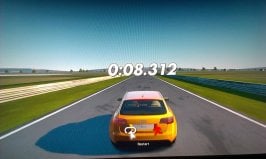
Next test is running the car with its premium bodykit which some people have claimed increases downforce and will therefore slow the cars down.
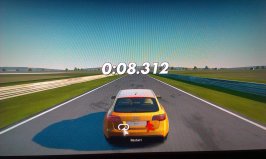
Next test is still with the bodykit on and now those expensive rims (eg; Boyd Coddington F-09) that cost twice as much as the others and apparently have a performance benefit.
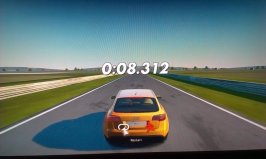
Now this test includes all of the above bodykit, wheels and now the custom wing set to minimum downforce level of 5
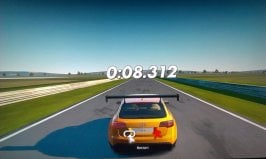
So there you have it - Myths Busted!
Next up I will be looking at chassis stiffening, the myth that a painted carbon bonnet is quicker than a raw carbon bonnet and more.
Stay tuned !
Mythbusting Part 2
Now chassis stiffening is something I will have to explore in more detail at a later date as information from the community suggests that this feature might be something that works on older chassis based cars, not the unibody type we have today. It's possible that it mainly affects the cornering capabilities and that it serves no purpose in drag at all. So I fitted the raw carbon bonnet which made no difference and neither did the chassis stiffening.
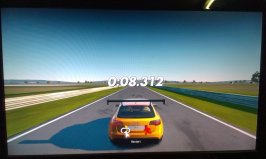
Next in the test cue is the Centre differential torque distribution between front and back. Generally 45:55 is the rule of thumb but it shows that there are differences even 1 click away. This was set at 44:56.
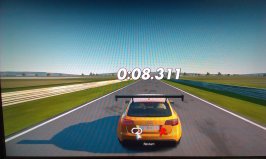
I tried everything from 40:60 to 50:50 and 44:56 and 42:58 were the only two settings that actually improved the time by .001 of a second. Nothing to get excited over but it shows there is definitely an improvement.
This next one really surprised me.
Generally you would just assume that the triple plate clutch kit being the most expensive and the last option is the best way to go. Well, the cake is a lie !! This test was ran with the Twin Plate Clutch Kit.
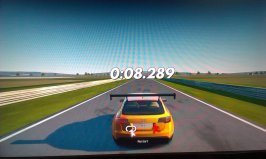
WTF right ? yep ! I ran multiple passes and switched back and forth from the twin to the triple and the results are solid. For this vehicle in this circumstance, a Twin plate clutch is the faster option. It must have a higher rotational mass as what I saw against my ghost is that I pulled away from the line faster till about midtrack and then the ghost was slowly crawling its way back. It wasn't enough to catch the twin plate though !
Well here is the thread where I (and others if the testing is thorough) will aim to put those theories to rest.
Mythbusting Part 1
My test car is a Audi RS6 Avant 08'. My drag tune uses an automatic transmission which isn't the fastest but after 10 runs back to back giving exactly the same time I am happy to use it as the test mule.
So here is its time running automatic trans with stock wheels, stock body and no wing.

Next test is running the car with its premium bodykit which some people have claimed increases downforce and will therefore slow the cars down.

Next test is still with the bodykit on and now those expensive rims (eg; Boyd Coddington F-09) that cost twice as much as the others and apparently have a performance benefit.

Now this test includes all of the above bodykit, wheels and now the custom wing set to minimum downforce level of 5

So there you have it - Myths Busted!
Next up I will be looking at chassis stiffening, the myth that a painted carbon bonnet is quicker than a raw carbon bonnet and more.
Stay tuned !
Mythbusting Part 2
Now chassis stiffening is something I will have to explore in more detail at a later date as information from the community suggests that this feature might be something that works on older chassis based cars, not the unibody type we have today. It's possible that it mainly affects the cornering capabilities and that it serves no purpose in drag at all. So I fitted the raw carbon bonnet which made no difference and neither did the chassis stiffening.

Next in the test cue is the Centre differential torque distribution between front and back. Generally 45:55 is the rule of thumb but it shows that there are differences even 1 click away. This was set at 44:56.

I tried everything from 40:60 to 50:50 and 44:56 and 42:58 were the only two settings that actually improved the time by .001 of a second. Nothing to get excited over but it shows there is definitely an improvement.
This next one really surprised me.
Generally you would just assume that the triple plate clutch kit being the most expensive and the last option is the best way to go. Well, the cake is a lie !! This test was ran with the Twin Plate Clutch Kit.

WTF right ? yep ! I ran multiple passes and switched back and forth from the twin to the triple and the results are solid. For this vehicle in this circumstance, a Twin plate clutch is the faster option. It must have a higher rotational mass as what I saw against my ghost is that I pulled away from the line faster till about midtrack and then the ghost was slowly crawling its way back. It wasn't enough to catch the twin plate though !
Last edited:





